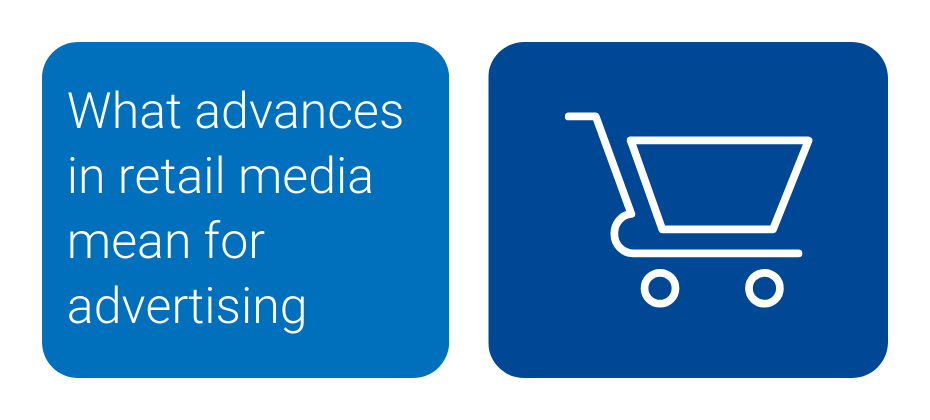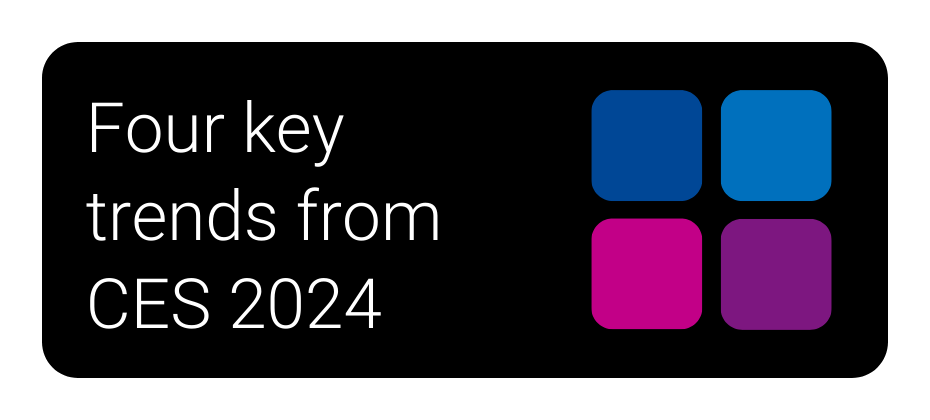At A Glance
Infillion and Experian collaborate to help advertisers connect with audiences across devices and channels, as cookies and mobile identifiers disappear. By integrating Experian's Digital Graph and Offline Identity Resolution, Infillion strengthens identity connections, improves campaign reach, and enhances audience engagement across CTV, mobile, and web.In our Ask the Expert Series, we interview leaders from our partner organizations who are helping lead their brands to new heights in AdTech. Today’s interview is with Ben Smith, VP of Product, Data Products at Infillion.
Adapting to signal loss
What does the Experian–Infillion integration mean for advertisers looking to reach audiences as signals fade?

As cookies and mobile identifiers disappear, brands need a new way to find and reach their audiences. The Experian integration strengthens Infillion’s XGraph, a cookieless, interoperable identity graph that supports all major ID frameworks, unifying people and households across devices with privacy compliance, by providing a stronger identity foundation with household- and person-level data. This allows us to connect the dots deterministically and compliantly across devices and channels, including connected TV (CTV). The result is better match rates on your first-party data, more scalable reach in cookieless environments, and more effective frequency management across every screen.
Connecting audiences across channels
How does Experian’s Digital Graph strengthen Infillion’s ability to deliver addressable media across channels like CTV and mobile?

Experian strengthens the household spine of XGraph, which means we can accurately connect CTV impressions to the people and devices in that home – then extend those connections to mobile and web. This lets us plan, activate, and measure campaigns at the right level: household for CTV, and person or device for mobile and web. The outcome is smarter reach, less waste from over-frequency, and campaigns that truly work together across channels.
The value of earned attention
Infillion has long championed “guaranteed attention” in advertising. How does that philosophy translate into measurable outcomes for brands?

Our engagement formats, such as TrueX, are based on a simple principle: attention should be earned, not forced. Viewers choose to engage with the ad and complete an action, which means every impression represents real, voluntary attention rather than passive exposure. Because of that, we consistently see stronger completion rates, deeper engagement, and clearer downstream results – like lower acquisition costs, improved on-site behavior, and measurable brand lift.
To take that a step further, we measure attention through UpLift, our real-time brand lift tool. UpLift helps quantify how exposure to a campaign influences awareness, consideration, or purchase intent, providing a more complete picture of how earned attention translates into business impact.
Creative innovation and location insights
Beyond identity resolution, what are some of Infillion’s capabilities, like advanced creative formats or location-based insights, that set you apart in the market?

One key area is location intelligence, which combines privacy-safe geospatial insights with location-based targeting through our proprietary geofencing technology. This allows us to build custom, data-driven campaigns that connect media exposure to real-world outcomes – like store visits and dwell time – measured through Arrival, our in-house footfall attribution product.
We also build custom audiences using a mix of zero-party survey data, first-party location-based segments, and bespoke audience builds aligned to each advertiser’s specific strategy.
Then there’s creative innovation, which is a major differentiator for us. Our high-impact formats go beyond static display, such as interactive video units that let viewers explore products through hotspots or carousels, rich-media ads that feature polls, quizzes, dynamic distance, or gamified elements, and immersive experiences that encourage active participation rather than passive viewing. These creative formats not only capture attention but also generate deeper engagement and stronger performance for a variety of KPIs.
Future ready media strategies
How does Infillion’s ID-agnostic approach help brands future-proof their media strategies amid ongoing privacy and tech changes?

We don’t put all our eggs in one basket. XGraph securely unifies multiple durable identifiers alongside our proprietary TrueX supply to strengthen CTV household reach. This agnostic design allows us to adapt as platforms, regulations, and browsers evolve – so you can preserve reach and measurement capabilities without getting locked into a single ID or losing coverage when the next signal deprecates.
Raising the bar for media accountability
Looking ahead, how is Infillion evolving its platform to meet the next wave of challenges in audience engagement and media accountability?
From an engagement standpoint, we’re expanding our ability to support the full customer journey, offering ad experiences that move seamlessly from awareness to consideration to conversion. That includes smarter creative that adapts to context, intelligent targeting and retargeting informed by real data, and formats designed to drive measurable outcomes rather than just impressions.
When it comes to accountability, we’re ensuring that measurement is both flexible and credible. In addition to our proprietary tools, we partner with leading third-party measurement providers to validate results and give advertisers confidence that their investment is truly performing. Within our DSP, we emphasize full transparency and log-level data access, ensuring advertisers can see exactly what’s happening on every impression.
All of this builds toward the next era of agentic media buying – one enabled by our MCP suite and modular, component-based tools. This evolution brings greater accountability and next-generation audience engagement to an increasingly automated, intelligent media landscape. Our goal is to help brands connect more meaningfully with audiences while holding every impression – and every outcome – to a higher standard of transparency and effectiveness.
Driving impact across the funnel
What is a success story or use cases that demonstrate the impact of the Experian–Infillion integration?
We recently partnered with a national veterans’ organization to raise awareness of its programs for injured or ill veterans and their families. Using the Experian integration, we combined persistent household- and person-level identifiers with cross-device activation to reach veteran and donor audiences more precisely across CTV, display, and rich media. The campaign achieved standout results – industry-leading engagement rates, a 99% video completion rate, and measurable lifts in both brand awareness (3.6 % increase) and donation consideration (13.7% lift). It’s a clear example of how stronger identity and smarter activation can drive meaningful outcomes across the full funnel.

Contact us
FAQs
Identity resolution ensures accurate connections between devices, households, and individuals. Experian’s Offline Identity Resolution and Digital Graph strengthen these connections for improved targeting and consistent measurement across CTV, mobile, and web.
Solutions like Experian’s Digital Graph enable brands to connect first-party data to household and person-level identifiers, ensuring scalable reach and compliant audience targeting legacy signals fade.
Focusing on earned attention (where audiences actively choose to engage) leads to stronger completion rates, improves on-site behavior, and drives measurable increases in brand awareness and consideration.
By linking CTV impressions to households and extending those connections to mobile and web, Experian’s identity solutions ensure campaigns work together seamlessly, reducing over-frequency and improving overall reach.
About our expert

Ben Smith, VP Product, Data Products
Ben Smith leads Infillion’s Data Products organization, delivering identity, audience, and measurement solutions across the platform. Previously, he was CEO and co-founder of Fysical, a location intelligence startup acquired by Infillion in 2019.
About Infillion

Infillion is the first fully composable advertising platform, built to solve the challenges of complexity, fragmentation, and opacity in the digital media ecosystem. With MediaMath at its core, Infillion’s modular approach enables advertisers to seamlessly integrate or independently deploy key components—including demand, data, creative, and supply. This flexibility allows brands, agencies, commerce and retail media networks, and resellers to create tailored, high-performance solutions without the constraints of traditional, all-or-nothing legacy systems.
Latest posts

As we approach the 2024 election season, the advertising landscape is poised for tremendous growth, with political ad spending projected to surpass $10 billion. With Kamala Harris entering the race, spending priorities have moved, especially in key states like Ohio, where the Senate race alone has already seen $300 million in ad spending. Connected TV’s (CTV’s) share of political ad spending is set to jump from 2.7% in 2020 to 12.8% this year. The Harris campaign is leading the charge, allocating $200 million for digital ads, much of which will go to streaming platforms. During this political campaign marketing season, effective audience targeting is crucial, as it holds the potential to sway voters, shape public opinion, and ultimately determine election outcomes. In this blog post, we'll highlight political audiences that can assist political campaigns and organizations in connecting with their desired audiences in a meaningful and impactful way. What separates Experian's syndicated audiences Experian’s 2,400+ syndicated audiences are available directly on over 30 leading television, social, programmatic advertising platforms, and directly within Audigent for activation within private marketplaces (PMPs). Reach consumers based on who they are, where they live, and their household makeup. Experian ranked #1 in accuracy by Truthset for key demographic attributes. Access to unique audiences through Experian’s Partner Audiences available on Experian’s data marketplace, within Audigent for activation in PMPs and directly on platforms like DirectTV, Dish, Magnite, OpenAP, and The Trade Desk. Three political campaign marketing audience categories Over 240 politically relevant audiences are available on-the-shelf of leading TV, demand, and supply platforms to help your political partners gain share based on three political audience categories: Political affiliations Political personas Relevant ballot initiative audiences Let's break down each category and which audiences you can use in your political campaign marketing to target voters this upcoming election season. Political affiliations Target audiences could include those who are likely to be in the Democratic, Independent, or Republican parties, or are likely to not be registered to a political party. Our political affiliation audiences use a foundation of voter registration data with Experian's advanced statistical models to reach voters at scale, based on their political party. Here are four audience segments that you can activate to target voters based on their predicted party affiliation: Political Affiliation > Democrat Political Affiliation > Republican Political Affiliation > Independent/Other Political Affiliation > Unregistered Political personas One key target audience could be voters who are likely to be influenced by a political candidate's renewable energy program. Additional target audiences could include those who are likely to be influenced by a candidate's position on the economy or healthcare. Here are 10 audience segments that you can activate to target voters based on their viewpoints on key political issues: Political Personas > Political Unregistered Liberal Leaning Political Personas > Political Unregistered Conservative Leaning Political Personas > Committed Democrats Political Personas > Moderate Democrats Political Personas > Political Leaning Liberals Political Personas > Liberal Leaning Independents Political Personas > Conservative Leaning Independent Political Personas > Political Leaning Conservatives Political Personas > Moderate Republicans Political Personas > Committed Republicans To reach voters who believe the environment is a key political issue, you can layer in our GreenAware audiences with our Political Personas audiences: GreenAware > Behavioral Greens GreenAware > Think Greens GreenAware > Potential Greens GreenAware > True Browns Psychographic/Attitudes > Shopping Behavior > Smart Greens To reach voters based on their regional voting patterns, you can use our new battleground counties and district audiences: Affiliation Switcher Counties Battleground Counties House Battleground Districts Democrat Counties Republican Counties Independent Counties Relevant ballot initiative audiences You can also reach voters based on their attitudes and behaviors related to key ballot measures. Let's walk through a few examples below and highlight relevant syndicated audiences that you can activate during the 2024 political campaign marketing season. Local and national ballot initiative support Consumer behaviors are often great predictors of down-ballot initiatives. For example, military families may show favor toward initiatives supporting veterans, households with children present may show more interest in school funding, and those interested in the environment will favor green initiatives. Experian offers an array of consumer behavior and interests audiences to help you fine-tune your targeting and messaging strategies. Lifestyle and Interests (Affinity) > Occupation > Military – Active Demographics > Presence of Children > Ages: 0-18 Charitable causes Understanding where consumers are actively donating to charitable causes paints a clear picture into their political interests. Lifestyle and Interests (Affinity) > Charitable Causes > Contributes to Political Charities Consumer Financial Insights > Discretionary Spend – Donations > $1,000-$1,999 Demographics Demographics play a critical role into voter opinions with presence of children, age, and household income influencing decisions at the polls. Geo-Indexed > Demographics > Household Income: $50,000-$74,999 Geo-Indexed > Demographics > Education: Bachelor Degree Demographics > Presence of Children > Ages: 10-12 Demographics > Marital status > Single Demographics > Ages > 19-24 Lifestyle and Interests (Affinity) > Moms, Parents, Families > Mothers with infant child(ren) (0-3 yrs old) Millions of campaign dollars were wasted in the 2022 midterm elections when voters were targeted with ads for issues and candidates they couldn’t vote for. Using advances in geo-targeting can help save wasted spend and ensure relevant messages reach the right voters. Finance Income and large financial decisions often trigger changes in perspective and influence voter behaviors. Financial FLA Friendly1 > Income > $1,000-$24,999 Financial FLA Friendly > In Market New Mortgage Financial FLA Friendly > In Market Auto Loan Media consumption and engagement Media consumption and engagement offers great insights into how voter interest, current channel engagement, and engagement in political issues. TrueTouch: Communication Preferences > Engagement Channel Preference > Email Engagement TrueTouch: Communication Preferences > Engagement Channel Preference > Streaming TV Social Media > Snapchat Purchase Transactions > Ad Responders > Digital Television (TV) > Ad Avoiders/Ad Acceptors > Ad Acceptors Mosaic Proprietary persona-based audience solution that combines demographic and behavioral data to create a holistic view of voters and their interests. Mosaic – Personas – Lifestyle and Interests > Group O: Singles and Starters > O55 – Family Troopers Occupation Provides the opportunity to deliver targeted messaging on measures based on a consumer’s occupation. Demographics > Occupation > Management/Business and Financial Operations Demographics > Occupation > Sales Demographics > Occupation > Farming/Fish/Forestry Consumer Behaviors > At-Home: Retired/Empty Nesters Consumer Behaviors > Occupation: Education Personal views Understand consumers personal views around family, their social and work life. Psychographic/Attitudes > Personal Views > Work Centered Psychographic/Attitudes > Personal Views > Family Centered Psychographic/Attitudes > Personal Views > Social Isolation We can help you match your message to your audience With Experian's political audiences, you can confidently execute your political campaign marketing, knowing our audiences are based on voter registration data and advanced predictive technology. Our highly accurate models are validated by our expert audience team to ensure precise targeting and drive impact and influence with the right audience. We understand that finding a trusted data provider can be a challenge, which is why we make it easy to access our syndicated audiences. For a full list of all of Experian's syndicated audiences, download our syndicated audiences guide. Download our syndicated audiences guide You can activate our political audiences on-the-shelf of most major platforms. Can't find the audience you're looking for or need a custom audience? Connect with our audience team for more information. Additionally, work with Experian’s network of data providers to build audiences and send to an Audigent PMP for activation. Connect with our audience team Footnote “Fair Lending Friendly” indicates data fields that Experian has made available without use of certain demographic attributes that may increase the likelihood of discriminatory practices prohibited by the Fair Housing Act (“FHA”) and Equal Credit Opportunity Act (“ECOA”). These excluded attributes include, but may not be limited to, race, color, religion, national origin, sex, marital status, age, disability, handicap, family status, ancestry, sexual orientation, unfavorable military discharge, and gender. Experian’s provision of Fair Lending Friendly indicators does not constitute legal advice or otherwise assures your compliance with the FHA, ECOA, or any other applicable laws. Clients should seek legal advice with respect to your use of data in connection with lending decisions or application and compliance with applicable laws. Latest posts

In this article…Benefits of retail media for advertisersRetail media network use case: Experian's impactful marketing attribution with a discount store giantKroger Precision Marketing’s newly announced platformHome Depot retail media Amazon retail mediaWalmart retail mediaThe future of RMNs Retail media networks (RMNs) are an exciting innovation within the advertising industry. A retail media network refers to an advertising platform that a retailer owns, providing marketers with the opportunity to buy advertising space on the retailer's digital platforms as well as extend their reach offsite with key platforms the retailer has partnered with to open up their media buying to advertisers. The retailer uses first-party data and customer insights to create new advertising opportunities and connect with shoppers throughout their buying journey. In this article, we’ll discuss the significant advances in retail media trends and technology — and their implications for the future of advertising. Benefits of retail media for advertisers Every online impression counts in the digital era, making retail media especially advantageous for advertisers. It yields new opportunities for advertisers to thrive, which we’ll discuss below. Get access to first-party data First-party data is a valuable asset for advertisers. Retail media networks offer advertisers direct access to customer insights from the retailer's data vault, which helps them create highly personalized ad campaigns and connect with current and potential customers. Custom marketing options for each brand Retail media provides brands with various marketing options, from product listings to onsite display advertising. These options allow advertisers to customize their approach, deliver tailored messages to their target audience, and meet consumers where they are. Reach new customers Retail media networks empower advertisers to connect with new and existing customers using retailers’ extensive digital presence. These networks extend beyond a retailer's own website and allow brands to tap into a broader audience base; major RMNs often have a significant offsite presence and provide advertisers with opportunities to reach consumers across various digital touchpoints and platforms beyond the retailer's controlled environment. This reach enhances brand visibility, engages diverse audiences, and contributes to the growth of customer acquisition. Closer proximity to purchase decisions Another benefit of retail media is its ability to position brands closer to the point of purchase in the customer journey. Targeted, data-driven advertising strategically placed across various touchpoints enables retailers to influence consumers when they are already lower in the purchase funnel. This proximity increases the likelihood of faster purchase decisions, especially when complemented by strategies such as timely offers and retargeting, expediting the decision-making and conversion processes. Consumers prefer personalized advertising Research has shown that approximately 50% of consumers will spend more money with companies that personalize their e-commerce retail experience. Ads relevant to a consumer’s interests and aligned with their behaviors make shoppers more likely to engage with a brand and find it easier and more convenient. As retailers honor consumer preferences for personalized advertising, they’ll find it easier to align with consumer preferences and provide an improved shopping experience. Retail media network use case: Experian's impactful marketing attribution with a discount store giant Experian’s past collaboration with a discount store giant involved implementing a comprehensive marketing attribution strategy. The primary goal was to effectively demonstrate brand campaign performance and optimize ad spend within the retail media network. We built a full-stack attribution solution that connected their offline and online data, and our approach was as follows: We started by collecting exposure data from all touchpoints, such as the website, app, and offsite display and social, to turn anonymous exposures into identified individuals and households. Additionally, we gathered debit and credit card transaction data from in-store and online points of sale to better understand purchase behavior. We also unveiled new demographic insights for the retailer. To streamline the decision-making process, we provided an easy-to-read reporting tool that showcased vital performance metrics. Takeaways from the collaboration emphasized the importance of: Understanding the audience seeing the ads and those making purchases. Analyzing incremental lift and identifying insights or trends. Sharing these valuable insights across the organization and with advertisers to inform future campaigns and brand positioning. Utilizing recent trends in the retail media landscape This case study serves as a prime example of how recent retail media trends are shaping a data-centric, integrated, and insights-driven future for advertising in retail. Our marketing attribution strategy aligns with the industry's shift toward data-driven decision-making in RMNs. Today, retailers are adopting full-stack attribution solutions like ours, enabling them to connect offline and online data to understand customer interactions better. This reflects the trend of looking for a holistic view of customer journeys and highlights the importance of integrating diverse data sources to understand consumers comprehensively. Moreover, our strategy to transform anonymous exposures into identified individuals, integrate transaction data, unveil new demographic insights, and provide an easy-to-read reporting tool mirrors the trends of enhanced personalization, merging online and offline data, and simplifying analytics within RMNs. Using new retail media Our introduction of a user-friendly reporting tool highlights the potential of new retail media to change how advertisers analyze data and gain actionable insights. It emphasizes the value of advanced tools in optimizing ad campaigns, measuring performance metrics, and informing future strategies. New technology will continue to drive effective marketing attribution and shape the future of retail advertising. Kroger Precision Marketing’s newly announced platform Kroger Precision Marketing (KPM) represents another excellent retail media use case. The retail media arm of the popular supermarket chain is looking to the future with the launch of its advertising platform. KPM is committed to innovation, and this move underscores its desire to be at the forefront of the retail media landscape. Let's take a closer look at some of the essential features of this new platform. In-house KPM recently announced the launch of an in-house advertising platform — a significant shift from their previous practices, where they relied on external tools and systems for their retail media services. By bringing the ad technology in-house, KPM has greater control, flexibility, and the ability to align its platform precisely with its retail media goals. This decision enhances Kroger’s self-sufficiency and enables quicker adaptation to evolving market demands. KPM’s new in-house platform was officially rolled out on October 13, 2023, and is redefining how advertisers interact with Kroger’s expansive base of consumers. Easier for media buyers KPM's in-house platform is also focused on providing better tools for media buyers. The platform is designed to offer advanced automation and optimization capabilities that will make campaigns more efficient and data-driven. By using this platform, media buyers can easily reach the right audience, customize their messages, and fine-tune their campaigns — all in one place. Integrated platform KPM’s new platform will integrate with existing ad campaigns and eventually encompass all their retail media options. This interoperability makes migrating ongoing campaigns easy and minimizes disruptions to advertising efforts. In the long run, the platform will serve as the foundation for all KPM's retail media services. Advertisers will have a one-stop solution for on-site and off-site media channels to ensure consistency and efficiency in retail media strategies. KPM's emerging retail media solutions demonstrate a commitment to advertisers and their changing needs in a shifting digital era. Home Depot retail media Home Depot, a well-known player in the home improvement retail industry, has made great strides in retail media. With an impressive annual customer transaction count of 1.7 billion and 3.6 billion visits to homedepot.com, their Retail Media+ platform provides advertisers with unparalleled visibility, reaching 198 million individual customers across 2,322 stores, according to their site. The benefits of Retail Media+ also include 24/7 self-service access to advertising portals, real-time reporting for campaign optimization, and dedicated support. What Home Depot’s Retail Media+ does right Home Depot’s Retail Media+ has set itself apart through strategic initiatives that prioritize enhancements to the shopper experience. Here's a closer look at what makes Home Depot's approach to RMN noteworthy: Seamless integration: Retail Media+ seamlessly integrates into the customer's journey without disrupting their experience. The platform allows the delivery of targeted ads across various Home Depot-owned spaces, including the website, app, in-store, email, and offsite channels like social and video. Supplier-centric ad inventory: Home Depot allocates the majority of its RMN ad inventory to suppliers. This ensures the ads presented to customers align closely with the products available at Home Depot for a natural connection between onsite and in-store experiences. Customer-centric approach: Melanie Babcock, Vice President of Retail Media+ and Monetization at The Home Depot, emphasizes maintaining a customer-centric perspective. The goal is not merely to monetize the website but to enhance the customer journey by incorporating suppliers into the process. This approach contributes to a more personalized and relevant shopping experience. Exploration of offsite opportunities: Home Depot is actively exploring opportunities to expand its RM+ platform beyond onsite channels. Initiatives include piloting in-store video screens and venturing into connected TV (CTV). By considering the entire customer journey, Home Depot aims to provide value to suppliers while gaining deeper insights into customer behavior. Strategic use of data science: With the help of data scientists, Home Depot ensures personalized precision in its advertising efforts. This aligns with the shopper's preferences and needs and makes the ads more relevant and engaging. Ongoing adaptation and expansion: Home Depot's proactive stance is evident in its continuous efforts to adapt and expand its RMN initiatives. The exploration of offsite channels, partnerships with platforms like Roku and Disney Advertising, and the piloting of in-store video screens showcase a commitment to staying at the forefront of evolving digital retail trends. Home Depot's success with their RMN stems from its commitment to creating a symbiotic relationship between customers, suppliers, and the retail brand. Home Depot has set a benchmark for RMNs by aligning advertising efforts with the customer's journey and embracing technological advancements. Amazon retail media Amazon Advertising, the retail media division of Amazon, has become another dominant force in the industry. Let’s take a quick look at what they’ve done well and what they could improve. Scale of Amazon’s retail media In 2022, eMarketer estimated that Amazon commanded a 76.9% share of retail digital media spend, blowing its competitors out of the water. Walmart, the second-largest player, trailed far behind with a 6.1% share. This underscores Amazon's unparalleled influence and market presence in the digital advertising landscape and solidifies its position as the go-to platform for advertisers looking to reach a massive audience. What works for Amazon Amazon has an unmatched advantage when it comes to personalizing ads and delivering relevant content to consumers. With over 200 million Prime members in the U.S. alone, Amazon has access to vast amounts of valuable data that spans shopping habits, preferences, and more. This data is invaluable for advertisers looking to target their audiences with precision, and it gives Amazon a significant edge in the market. What needs to change Although Amazon continues to thrive, there’s always room for improvement. For instance, to attract brand dollars, traditional retailers are starting to concentrate on channels where Amazon has less historical dominance, such as in-store experiences and email marketing. Understanding this potential, Amazon has been experimenting with email tools to enhance merchant-audience connections and widen its reach. As ad sales' profitability becomes more significant, incorporating these offerings into Amazon's retail media strategy could further strengthen its market position. Walmart retail media Walmart has been working hard to become a more dominant retail media force. Walmart Connect, the retailer’s retail media network, has done an excellent job bridging the gap between online and in-store activities. It provides a unique closed-loop system that connects online and in-store activity on an unprecedented scale. This mechanism offers advertisers a comprehensive view of Walmart customers’ behavior, giving them valuable insights and measurable business results. With this closed-loop approach, advertisers can access a holistic view of customer activity and achieve successful marketing campaigns. How Walmart ties together online and in-store activities Walmart’s massive brick-and-mortar presence and its comprehensive online platform provide a complete view of customer behavior and preferences. This synergy between the digital and physical is a compelling selling point for advertisers that gives them a holistic view of consumer interactions. Walmart's connected shopping experience integrates both online and in-store activities, allowing advertisers to engage with customers from the research stage to the online or in-store purchase stage of the buying journey. New features and technology Walmart’s retail media platform is trying As part of their innovative initiatives, Walmart Connect introduced the "Holiday Hub," recognizing Walmart as America's go-to holiday shopping destination. Advertisers can use this hub to gain key customer insights and implement product best practices to ensure a meaningful omnichannel connection during the holiday season. In terms of new features and technology, Walmart Connect provides various advertising options to help brands stand out from the crowd: The Search feature ensures visibility when customers actively search for products, with ads appearing prominently in search results and on browse pages. Display ads, strategically placed on Walmart.com, the Walmart app, and across the web, aim to make a premium impression on customers based on their omnichannel Walmart history. For in-store influence, Walmart Connect offers opportunities to inspire shoppers through digital TV and point-of-purchase screens across 4,700+ Walmart stores. Walmart's closed-loop measurement uniquely enables advertisers to correlate online ads with purchases, providing unparalleled scale and accuracy in measuring campaign impact. Whether for a small business or a global brand, Walmart Connect offers solutions to help marketers discover new and effective ways to connect with their target audience. The future of RMNs The future of retail media networks (RMNs) is bright and holds exciting possibilities. These five key dynamics will likely drive retail media evolution: Smaller retailers getting into the RMN game With each passing day, more small brands are becoming active with RMNs. This trend is highly beneficial, bringing diversity, competition, expanded reach, and collaborative potential to the landscape. The future of RMNs is expected to be shaped by a mix of established and emerging brands. This will create an inclusive environment for advertisers and consumers alike. Potential for cross-platform campaigns Cross-platform campaigns in RMNs allow advertisers to create a cohesive, impactful, and data-driven advertising approach across different retail media networks. This shift in campaign strategy aligns with the dynamic nature of consumer interactions in the digital landscape, as it provides a comprehensive solution for brands that seek to enhance their presence and influence across diverse channels. Targeted vs. personalized ads Personalized ads are becoming a notable trend in RMNs and replacing targeted ads. This means RMNs now provide consumers with more relevant and tailored content based on their interests and preferences. The shift is driven by the increasing demand for personalization and the need to improve the consumer shopping experience. RMN advertisers must take advantage of these personalized ad opportunities to create stronger brand awareness. Conversions vs. brand awareness Advertisers often struggle when deciding whether to focus more on conversions or brand awareness. For a well-rounded strategy, RMN advertisers should craft campaigns that balance these two goals. Using the data and insights from RMNs, advertisers can personalize their messaging to drive sales and build and reinforce brand recognition. This approach can help RMN advertisers make brand awareness a central component of their advertising efforts. Third-party data integration to enhance data and audiences As RMNs evolve, data expansion is essential for targeted, personalized, and contextually relevant advertising experiences and will help drive the future success of retail media. Advertisers using third-party data, in particular, can unlock new dimensions in audience targeting to create more tailored and impactful campaigns. Third-party data allows for a broader understanding of customer behaviors and preferences and facilitates relevant content delivery. Data insights for more connected, tailored advertising Moving forward, it will also be important for advertisers to achieve a consistent view across online, app, and in-store activities. They need to understand where customers prefer to be reached and where they are most likely to engage so they can ensure a strategic alignment of messaging and optimize the effectiveness of their retail media strategies. The future of RMNs lies in using comprehensive data insights for more connected and personalized advertising. What about AI? Where is it useful? In the retail media context, AI (Artificial Intelligence) enhances advertisers’ capabilities by providing valuable insights and automation to drive more effective and personalized ad campaigns. AI helps analyze vast amounts of data, predict consumer behavior, and empower advertisers with the tools to optimize their strategies. Ultimately, it helps them deliver more tailored, relevant content to consumers that best aligns with their interests and preferences. Humans still needed to drive change While AI is a critical technology in retail media, it doesn’t replace the need for human expertise. People are still essential for driving change, making strategic decisions, and ensuring AI-driven solutions align with business objectives. Moving forward, advertisers will need to utilize both AI-driven capabilities and human expertise to see the greatest success. A connected customer identity is the key to success The future of advertising lies in the seamless integration of customer identity across various touchpoints. Experian's cutting-edge solutions are leading the way in this transformation. We can help businesses navigate this dynamic environment with helpful tools that unlock a comprehensive view of audiences and facilitate effective campaigns across multiple channels. Partner with Experian to achieve retail media success Experian’s comprehensive data and identity solutions can help RMNs maximize their opportunity, with our new solution tailored to enhance RMNs’ strength in first-party shopper data. Experian’s solution helps RMNs unlock expanded customer insights, enriched audiences for activation, identity resolution for cross-channel audience targeting, and real-time measurement and attribution. This comprehensive solution is designed to help RMNs capture more advertising revenue. Our goal is to ensure you capture the most advertising dollars and make your RMN operate at its peak performance. Read more here Our Consumer Sync solutions can connect customers across multiple touchpoints and channels, specifically bridging the gap between online and in-store to ensure a holistic view and strategy for audiences, campaigns, and performance. With access to over 2,500 frequently updated data points, we have the depth and breadth of data needed to supplement your audience strategy. We’ll help you unlock a broad view of your audiences to see well-rounded profiles, gain the reach required to access your audience across multiple channels, and turn opportunities into revenue. Additionally, our Consumer View solutions can help deepen your understanding of your customers, their behaviors, and campaign success. Connect with a member of our team today to get started. Latest posts

Every year, the Experian team attends the Consumer Electronics Show (CES) in Las Vegas, to immerse ourselves in the world's most significant consumer tech showcase and stay at the forefront of the latest technological advancements and innovations that shape the AdTech industry. This year's event was a vibrant melting pot of innovation and vision, from streamers taking a bigger bite of the advertising pie to the emergence of AI-powered solutions and drone delivery services. Amidst these advancements, the dynamic interplay of technology, media, and advertising raised important questions, especially in the context of evolving regulations and cookie deprecation. During CES, we captured insights from various thought leaders, and in the coming months, we'll be sharing these valuable perspectives with you. Watch the video below for full insights coming from our content studio onsite during the event. Or, keep reading for a recap on four key trends from CES and what they mean for your business in 2024! “My first CES was a major success. You could feel the buzz in the air as new ideas and partnerships were being created within and across industries. The intersection of the different players within retail media, connected TV, retail technology, the demand and supply-side, and agencies all in an ever-changing world of regulation and privacy begs for a solution that can maximize a successful outcome for all.”anne passon, sr director, sales, retail & cpg 1. Audience targeting: How first- and third-party data work together A central theme at CES was the importance of audience targeting, highlighting the crucial role of first-party data. However, it’s clear that to maximize its potential, this data needs to be augmented with sophisticated identity solutions and enriched with third-party insights, all while navigating the complexities of privacy regulations. This integrated approach is vital to understanding audiences and for creating more effective marketing strategies that comply with privacy regulations. 2. Standardizing metrics in retail media networks The challenges around retail media networks, particularly in terms of standardizing metrics like incremental return on ad spend (iROAS), were a hot topic at CES. This complexity around this topic underscores the need for neutral, expert third parties to help bring clarity and consensus, aiding businesses in navigating this multifaceted domain. 3. The challenge of switching data solutions Discussions covered the broader challenges associated with transitioning to new data solutions. For businesses, this involves a critical assessment of the benefits versus the costs and complexities of adopting new platforms or systems. This decision-making process is increasingly significant as data strategies become integral to marketing success. 4. Identity solutions in a cookieless future With the industry moving toward a cookieless future, the spotlight at CES was on the importance of robust identity solutions. Understanding the functionality and necessity of various universal IDs is essential to minimize data loss and maintain effective targeting. Investing in flexible and adaptable identity solutions like the Experian Graph is essential to maintain effective targeting and audience engagement in this new landscape. Announcements and advertising innovations at CES 2024 CES was a stage for significant announcements and innovative marketing initiatives: Criteo and Albertsons announced their collaboration in retail media. Instacart's partnership with Google for enhanced shopping ads and AI shopping carts. NBCUniversal's advancements in streamlining programmatic advertising. Brands like Netflix, LG, Freewheel, and Amazon Ads also captured attention with their creative marketing strategies, ranging from unique collaborations to themed promotions and captivating events. These insights from CES provide a glimpse into the future of technology, media, and advertising. They highlight the need for adaptability, innovation, and informed decision-making in these dynamic industries, especially in the context of privacy regulations. Stay tuned for our series of posts where we'll dive deeper into these topics, sharing exclusive insights from industry thought leaders. Follow us on LinkedIn or sign up for our email newsletter for more informative content on the latest industry insights and data-driven marketing. Contact us Latest posts